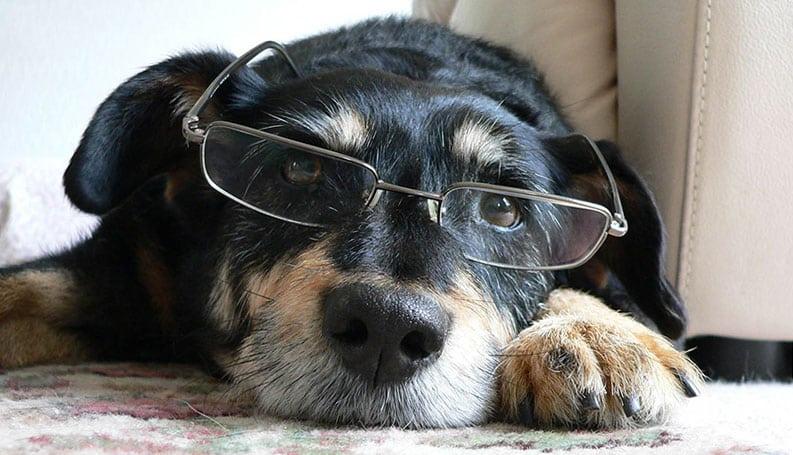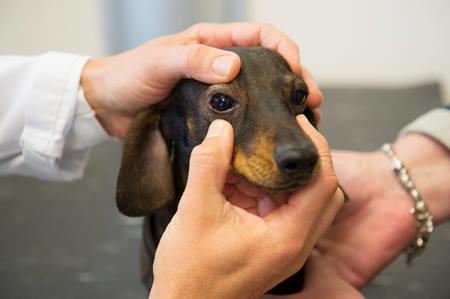Cataracts can be defined as the clouding of the lens of the eye, it becomes progressively opaque leading to blurred vision and blindness in advanced stages.
The lens forms the clear part of the eyes and lies behind the iris and cornea, it allows light to pass through to the back of the eye, the light/image is then converted into nerve signals which are sent to the brain for interpretation, in the case of cataracts, the cloudiness of the lens produces a blurred image.

Lenses are made up of water and proteins, the proteins are arranged in a systematic way to allow light to pass through, as dogs age, the proteins begin to clump up and slowly grow in size until the entire lens is covered giving it a cloudy grayish blue appearance.
Causes of Cataracts
- Age: this occurs as a result of proteins clumping up together, it is slow in onset and progresses over time until the entire lens is covered, usually affects dog above the age of 8.
- Injury: Blunt or perforating injuries to the eye can lead to cataracts.
- Toxicity: Some compound or drugs can cause lead to cataracts. E.g. long term use of ketaconazole (used to treat Cushing’s disease), dimethyl dulfoxide (used for joint inflammation)
- Metabolic Diseases: These include hyperglycemia and diabetes, this form of cataracts however does not lead to blindness, 75% of dogs with diabetes acquire cataracts with the first year after diagnosis, this condition affects both eyes in dogs with diabetes.
- Intraocular diseases: These include chronic glaucoma (Increased intraocular pressure), retinal detachment etc.
- Radiation therapy
- Genetics: Miniature poodles, Toy poodles, American Cocker Spaniels boxers, pugs etc. are more predisposed to cataracts compared to other dog breeds.
- Nutritional deficiencies of Vitamin A, E and C. It is also common in puppies on artificial milk diets.
- Birth defects
Symptoms / What to look for:
- Opaque, bluish grayish coloration of the eye.
- Reluctance to move or even climb the stairs
- Eye irritation and inflammation, they may appear red
- Pawing at the eyes
- Falling or bumping into furniture around the house (signs of poor vision)
Diagnosis
Once you suspect your fur baby is having problems with vision, a visit to the veterinarian is recommended, apart from a thorough physical examination and full blood work, an ophthalmic examination is crucial, blood biochemistry will help to check for state of the kidneys, liver and blood sugar levels to rule out metabolic diseases while a complete blood count will help to eliminate infections as possible causes.
Retro illumination is performed using a pen light during the eye examination, a shinning light is usually directed towards the pupil to check for opacity.
Treatment
Treatment options depend on the cause of the cataracts, stage of the cataracts and overall health status of the dog. For diabetic pets, insulin is usually prescribed and appropriate drugs administered in case of eye infections.

Surgical removal of the lens is prescribed for cases of advanced cataracts, the damaged lens is replaced with a plastic or acrylic lens which functions just as well as the natural lenses. Antibiotics should be prescribed post operative and the dog put on an E collar for 14 days. This will prevent him from pawing at the eye and to prevent infections.
Owners should watch out for possible eye complications following surgery, these include uveatis, glaucoma, retinal detachment and suture failure among others.
Prevention
- Senior dogs should have regular eye checkups to monitor their eye health.
- Dogs predisposed to cataracts should be fed a diet rich in Vitamin A, C, and E as well as Omega 3 essential fatty acids to promote good health of the eyes.
